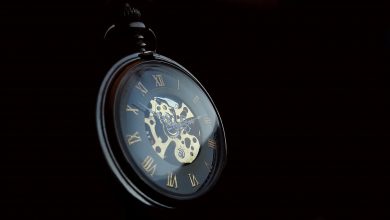How Are Artificial Cells Made?

In 1957, Dr. Thomas Chang was the first to propose the concept of an artificial cell. Typical artificial cells are cells with cell-like structures and have at least some of the characteristics of living biological cells such as self-reproduction, metabolism, and evolution. They have engineered particles that mimic one or more of the functions of a biological cell. The main purpose of artificial cells is to investigate the characteristics of biological cells, analyze cell dynamics, and identify potential applications instead of biological cells.
Artificial cells have several applications in pharmaceutical, medical, biological and environmental studies, and these can be helpful in explaining the origin of life theory. There are two important methods used for the production of artificial cells, a top-down approach and a bottom-up approach.
Top-Down Approach to Artificial Cell Production
It is based on stripping the genome of living organisms to preserve the fewest number of genes needed for the essential features of cellular life, or simply to survive. Venter and colleagues found that the pathogenic bacterium Mycoplasma genitalium, which is among the smallest known free-living organisms, has only 517 genes. This small genome has inspired researchers to start developing minimal cells. When scientists destroyed non-essential genes, they found that about 256-350 genes are required to maintain cellular life. Further study by Gil and his colleagues revealed that this number of genes needed to preserve the essential characteristics of cellular life can be downloaded to 206 genes.
However, among these 206 genes, there are some genes that can still be removed, such as those required for the production of nucleotides and amino acids, reducing the number of genes to about 150. However, the meaning of minimal cells is also related to the environment. The survival of these minimal cells is because they demand the corresponding compounds to be available in the environment and easily enter the cells. The process of transporting genes one by one is cumbersome and inefficient. Replacing the original genes of biological cells with synthetic cells is considered a more modern and difficult method in a top-down approach.
Promising results have been obtained from some studies in the formation of some primary organisms such as bacteria and viruses. Cello and his colleagues created an artificial infectious poliovirus by de novo synthesis from the basic chemical building blocks of the cDNA poliovirus genome and created a poliovirus with pathological and physiological properties comparable to that of the natural poliovirus. Although viruses are not considered living organisms, this study demonstrated the potential to synthesize more complex living organisms through chemical or biochemical processes alone, without the need for a genetic template.
In 2010, Gibson and his colleagues designed genome sequences based on computer work, and although the designed genomes were slightly different from the original genome, the phenotypic characters of M.mycoides were expected in new cells and could be replicated on their own. This is very promising, but there are still many concerns and problems that say we are close to creating complex or eukaryotic organisms. For example, the genome of eukaryotes is very complex and building such a complex genome is difficult. Although this is a great advance in genome engineering, obtaining an error-free genome is very difficult.
Bottom-up Approach to Artificial Cell Production
The bottom-up approach relies on combining a stack of non-biotic components to form a cell rather than starting from existing living organisms as seen in the top-down approach. Therefore, bottom-up strategy is more difficult than top-down approach. The bottom-up method can correct some of the flaws seen in the top-down approach. For example, the top-down approach is caustic, can have some undesirable and unexpected consequences and unintended biological consequences. Systems developed from the bottom-up method, containing the least number of components required to perform the desired functions, are easier, more manageable, and therefore overcome the shortcomings of the top-down approach. For the construction of artificial cells using a bottom-up method, three basic materials are needed, including information-carrying molecules, cell membranes, and metabolism systems. Information-carrying molecules (RNA or DNA) determine the type and function of the cell. The cell membrane is considered as the habitat for cellular components, mediator for external communication, a carrier for many materials, a site for modulating various cellular processes such as adhesion and migration. Finally, Metabolism provides energy for cells to grow, divide and transfer information along with many other vital processes.
The basic biological units in the artificial cell design process are genes. Advances in cell biotechnology allow scientists to synthesize various genes and genomes in the laboratory with the help of computer-aided programs. After rational assembly and encapsulation within a vesicle, DNA program units in this way can be used as software to perform the role and function of artificial cells. Promoters, ribosomes, low molecular weight substances, various enzymes, and various transcription factors are also required.
As a result; Artificial cells can be produced by a bottom-up approach that starts from scratch with the assembly of non-biotic components, or a top-down method where non-essential genes are removed from organisms or replaced by synthetic ones.





